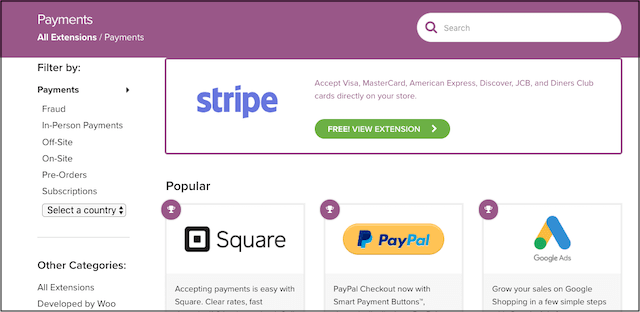If you develop websites, you know that there are a number of eCommerce platforms on the market. But which is the best? This post will describe Magento vs. WooCommerce as two possible options.
There are several factors that decide which eCommerce platform you should consider. These include:
- Your budget
- Whether you need a platform that can handle higher volumes of sale or a platform that’s comparatively smaller
- The key features you must have and which are the ones that you can manage without
- Which payment methods you’d like your eCommerce platform to support
Answering these questions first will make the choice much easier.
Editor’s note: Easily manage multiple websites with our free tools — even update core, plugins and themes for all your sites with one click.
Magento vs. WooCommerce: how they differ
There’s no doubt that both Magento and WooCommerce are excellent eCommerce platforms. Here’s how they differ:
- Ease of use.
- Cost.
- Additional features.
- Payment options included.
- Page load time.
Once you’ve read through our comparison, you should be able to make a choice that meets your needs.
Magento vs. WooCommerce
Before we dive into the similarities and differences of each platform, let us first understand what they are.
Magento and WooCommerce are platforms that enable a business to:
- Create an online store
- Showcase products for sale
- Accept payments from buyers
In other words, they are the platforms one needs to keep their online business up and running.
Magento
Magento is an eCommerce platform that is tailored mainly for enterprise-level eCommerce businesses and web developers. Magento has two options:
- A free downloadable version that you must host on your own servers (the open-source community version)
- The hosted service, which costs around $1,500-$2,000 minimum (the enterprise edition)
Magento has robust features and tools that give you complete flexibility in creating and running an online store. The open-source community of Magento is free to use and has some basic features.
WooCommerce
WooCommerce is one of the most widely used eCommerce platforms.
The free plug-in has all the necessary features that you may require for building a store. It’s user-friendly and takes just a few clicks to create a new store.
While the plugin comes with essential features, other features can be added by installing various plugins that may or may not be free.
Similarities and differences
As far as similarities go, both platforms share four things:
- Both can be used for free. WooCommerce is a free plugin and Magento has a free open source community version.
- Both support an unlimited number of products.
- Domain name and hosting are not included in WooCommerce or the free version of Magento (they are included with the paid version however).
- Both platforms support an unlimited number of sales and orders.
Now for the interesting part: the differences. These should help you decide which one to use for your particular situation.
1. Ease of use
WooCommerce is a cakewalk to understand and use. On the other hand, Magento requires a certain level of technical knowledge and is primarily built for developers.
Magento has a steeper learning curve than WooCommerce, which is suitable for even a non-tech person.

Magento does allow technical tweaking to bring out flexibility and customisation abilities that many businesses require.
2. Cost
Magento has a free version that does not have all the features and comes without any support. While the platform itself is free, you will require a VPS hosting plan or cloud service to run it, which doesn’t come cheap. We have already talked about the enterprise version.
WooCommerce is a free plugin, but you still need to pay for a:
- Domain name
- SSL
- WordPress hosting account
But this is still cheaper than the Magento open-source community version.
3. Additional features
Since WooCommerce is a WordPress plugin, your store can be integrated with any third- party service, be it Stripe, Google Analytics or Facebook.
For a non-technical person, adding such customisation is a breeze in WooCommerce, given the massive WordPress community.
Magento also offers third-party plugins for easy customisations, but they are fewer in number and have limitations. For heavy customisations and additional functionality, you might have to hire a Magento developer.
4. Payment options included
A good eCommerce platform is one that has several payment options, especially those that are most popular in the market.
WooCommerce can integrate with various payment options like:
- PayPal
- Alipay
- Stripe
- Visa
- Mastercard
- Google Pay
- Amazon Pay
It has its own payment option as well, in case you don’t want to use third-party integration.

Magento also offers many third-party payment extensions, including:
- Stripe
- Skrill
- Google Checkout
- 2Checkout
- Braintree
- WePay
Along with that, Magento supports Cash on Delivery, bank transfers, PayPal, etc.
5. Page load time
Another factor that is important while choosing your eCommerce platform is the speed. With attention spans of humans shrinking, faster load times matter more.
Today, every microsecond counts.
With the same RAM, location, and server type, the page load time of a WooCommerce page is around 414 ms against a load time of 619 ms for a Magento site.
The basic reason for the difference between the two is page size. While a WooCommerce site has a page size of 228 KBs, a Magento page size is 718 KBs.
The bottom line
While both platforms are doing great in their own target markets, which one you choose boils down to your needs.
WooCommerce is used by more than 2,000,000 businesses — against 250,000 Magento users — for two basic reasons:
- It is cost-effective
- It’s easy-to-use
On the other hand, if you’re an ambitious web developer who aspires to grow by leaps and bounds and is not scared of coding, then Magento is a good option.
The post The ultimate comparison of Magento vs. WooCommerce appeared first on Blog.


0 Comments